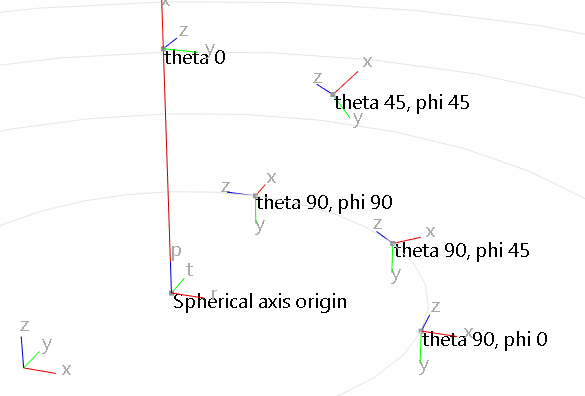# Constraint Axes
The constraint axis of a node (also referred to as the local axis of a node) is the axes that determines the directions of constraints (such as restraints, joints, rigid constraints, constraint equations) or local axis loads. Spring, mass and damper properties on a node also act in the constraint axis of the node.
The nodal constraint axes default to the Global axis, but you can set them to another axis set, whether Cartesian, cylindrical, or spherical. If the nodal axis is Cartesian then the local
If the nodal constraint axis is cylindrical, a local Cartesian axis is calculated at the location of each node, with
If the nodal constraint axis is spherical, a local Cartesian axis is calculated at the location of each node with

If the node is positioned at any of these special cylindrical or spherical locations then it may be better to use a Cartesian constraint axis for those nodes to avoid unexpected results.
See Axis Sets for more information.
